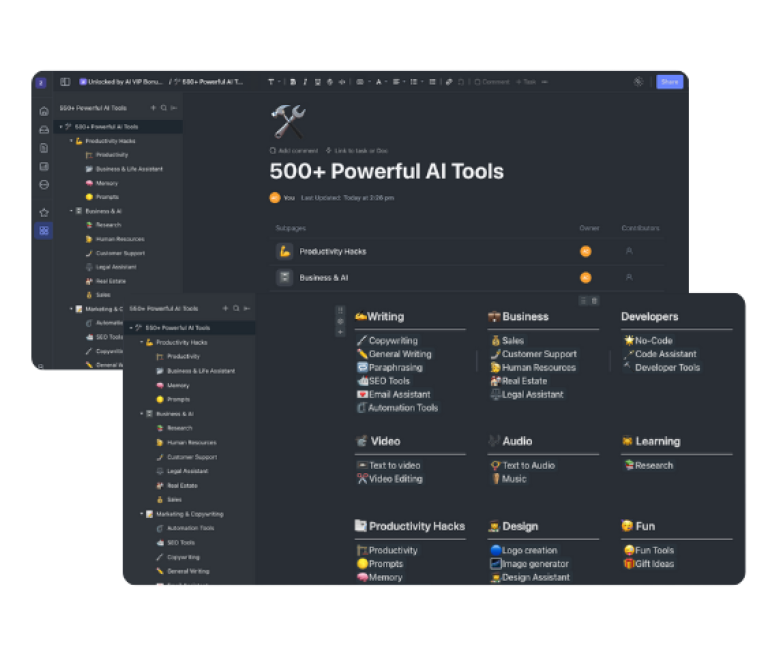You may have heard the term “dark social” being tossed around more recently, but what does it actually mean?
Dark social is a term used to describe traffic that comes from sources that can’t be accurately tracked.
This could include anything from private messages on social media platforms to emails to direct messages on messaging apps.
Because this traffic is so difficult to track, many brands are unsure of where their website visitors are coming from.
In this blog post, we will discuss the rise of dark social and how it’s affecting your brand!
What is Dark Social?
Dark social first hit the world in 2012 when Alexis Madrigal used it in this piece for The Atlantic. And since then it’s claimed a leading role in marketing today.
Since this traffic is so difficult to track, many brands are unsure of where their website visitors are actually coming from. As a result, they may miss out on valuable insights that could help them improve their marketing efforts and grow their business.
So how can you better understand your dark social traffic? Here are just a few of the places dark social comes from:
- Messaging apps: Whatsapp, WeChat, and Facebook messenger
- Email: Referrers aren’t shared due to privacy laws
- Native mobile apps: Instagram and Facebook
- Secure browsing: Clicking from HTTPS to HTTP your information is not passed on
- Content Platforms: YouTube, Apple Podcasts, Spotify
- Groups & Communities: Slack Communities, Discord, Facebook Groups
- Employee Communications: Zoom, Slack Channels, etc.
- Word of Mouth: Texts, Calls, in-person convos, DMs
- Events & Meetups: Virtual events, In-Person Meetups, Conferences
Yep, there are quite a few. But don’t fret, there is still time to start implementing ways to understand and track this data.
What are the effects of dark social on brands?
One of the biggest effects that dark social is having on brands today is decreased visibility.
Since tracking this traffic is so difficult, many brands have a hard time knowing which channels their visitors and traffic comes from.
This can impact everything from marketing campaigns to website design, as brands often have a much better idea of their audience when they have accurate data.
Another effect that dark social is having on brands is lowered conversions. Because so many channels are private, it’s harder for brands to target visitors and personalize content based on their interests and needs.
This makes it difficult for brands to build trust with potential customers, which can lead to lower conversion rates.
How Does Dark Social Compare to Other Traffic Sources
When compared to other sources of web traffic, dark social stands apart by providing an individualized experience.
Unlike public social media channels, users who share content through private conversations are more likely to provide deeper insights into their interests and wants.
Additionally, the conversation has no endpoint; while a tweet can reach millions of people at once, it eventually fades away if not engaged.

Dark social enables continuous communication between individuals and provides higher quality referral data than other sources such as search engine optimization or paid advertising campaigns.
If you want to stay ahead of the curve and harness this power, it’s essential to invest in tools that can help you better track and understand this traffic.
With the right data, you’ll be able to connect with your audience on a more personal level and build long-lasting relationships with them.
For brands, by learning which pages have received the most refers and clicks, marketers can gain valuable insight into consumer trends and behaviors – especially in ecommerce platforms – allowing them to further optimize their campaigns with highly engaged customers based on actual interaction data rather than assumptions based on broad demographics or channels.
What are some best practices for dark social?
There are some best practices that must be taken into account when engaging in dark social tactics. Here are a few tips to consider when dealing with dark social:
Analyze web analytics
You can generate detailed insights about campaigns and purchases by monitoring where customers came from and what links resonated most with them.
With forays into dark social opportunities, analytics are essential for understanding consumer behavior as there is no visible trace that it occurred beyond the close network of users who passed along the content.
Provide value
It’s crucial to ensure that any shared link provides substantial value to those who consumed it, as this will keep users engaged and more likely to continue spreading your message within their network of contacts.
Use sharing capabilities strategically
When crafting content for outreach purposes, be sure to include easy-to-use platforms that allow your audience to easily connect with you or share materials when they’re not viewing your actual site, ie. share buttons, etc.
This ensures maximum reach across multiple platforms both within and outside a closed user group.
Reach out through owned channels
Many consumers use this method out of convenience while browsing other sites, so connecting with them on owned channels or through conventional SEO postings will help capture those still looking for materials through conventional means.
This is a great way to extend visibility both offsite and onsite so you don’t miss out on potential clients or customers due to sheer chance encounters outside of a closed user group.
How can brands mitigate the effects of dark social?
One of the best ways for brands to mitigate the effects of dark social is by using tools that make tracking and analyzing this traffic easier.
For example, using marketing software such as Google Analytics or Heap can make it much simpler to track dark social traffic.
Additionally, brands can use marketing automation tools such as Facebook lead ads or targeted chatbots to make it easier for potential customers to engage with their brand.
While tracking dark social may seem daunting, there are some steps you can take to get a better understanding of where your website visitors are coming from:
1. Use tracking codes on links:
Using UTM codes or other tracking tags can help you track where the direct traffic is coming from and how people are engaging with your content.
2. Utilize Google Analytics:
Google Analytics is a great tool that allows you to view the sources of your website traffic, including dark social sources.
3. Use social media analytics:
Many social networks, such as Facebook and Instagram, have built-in analytics that can show you how your content is performing on each channel.
Finally, brands can focus on building trust and relationships with their customers, which will help them convert more easily even when they aren’t seeing the full picture of where these visitors are coming from.
What are the future trends in dark social?
Dark social has fundamentally changed the way people interact online, with more than 84% of all sharing happening through dark social sources.
With this in mind, it’s important for companies to stay abreast of the latest trends in dark social and leverage them to their benefit where possible.

Here are a few future trends for businesses to keep an eye out for:
Growth in Organic Sharing
Social media platforms such as Facebook and Twitter have allowed brands to tap into huge networks of potential customers, but many companies pop up on these platforms not knowing what they’re doing and end up leaving poor impressions.
This has led to further growth in organic sharing – i.e. When someone shares something they like based on personal preferences rather than following a brand page or agreeing with marketing messages.
More Personalized Networks
The rise of photo and video-sharing networks such as Instagram, Snapchat, and TikTok means that people are spending more time on platforms that allow them to communicate with one another in a more personalized manner.
This opens up countless opportunities for brands trying to break through the noise by allowing them to connect directly with target audiences from their niche.
Paid Advertising Through Messaging Platforms
Certain apps such as WhatsApp are beginning to offer businesses some paid advertising options that allow brands the opportunity to reach an underexposed customer base directly from their phones, increasing customer engagement levels through trusts built over years of one-to-one communication via apps.
The rise of dark social is continuing at an exponential rate and will only continue growing further over time.
Given this, understanding these consumer trends may be key for companies looking for success within their marketplace.
Conclusion: What’s next with Dark Social?
Dark social will continue to grow, with experts expecting it to become an even more important part of marketing strategies.
Messaging-based platforms such as WhatsApp, Facebook Messenger, and Voxer are particularly popular sources of dark social traffic, and these are likely to increase in usage rates as more consumers turn to them for content-sharing.
Marketers should also look out for new technologies, such as bots powered by artificial intelligence (AI), which will further change the game when it comes to dark social sharing and engaging customers in conversations.
The challenge here is making sure your brand remains front-of-mind when users are engaging in conversations on social channels.
This means creating high-quality content that resonates with your target audience so that it’s shared organically on private channels.
You must also find innovative ways to build relationships through instant apps, using data insights from customers’ digital footprints to create personalized experiences and drive conversions.
Finally, keep an eye out for new tools that allow you to monitor conversations via dark social channels – this could involve partnering with a third party or developing your own analytics software.
With the right approach and insight into user behavior on these platforms, you can increase engagement levels significantly – both on public and private forums.
Ultimately, by capitalizing on technologies like AI chatbots using big data analysis combined with developing efficient monitoring tools across multiple dark networks – brands have a real opportunity here that cannot be overlooked!
Dark Social has matured into one of the most powerful marketing tools available today; all that’s left is learning how best to utilize it!









